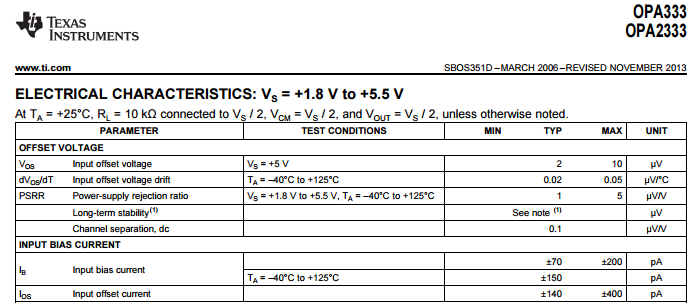Customer is using the OPA2333-HT as a charge amplifier with a high value feedback resistor (this is a standard circuit for them). To evaluate how it performs over temperature, they tested one of their circuits which uses the OPA2333-HT in die form on an alumina substrate with a 250Mohm resistor in the feedback and measured the output to evaluate the bias current. I pasted the circuit below. The feedback capacitor is a 1000pF NPO type.
The circuit was powered with +5V and monitored the output of the OPA2333. No input was connected. At room temperature the output was +2.5V as expected. At 350F (about 175C) though, the output was about +3.5V. This 1V change in output voltage indicates a 1V/250Mohm = 4,000pA bias current. The typical numbers for this op amp are +/-1,250pA according the data sheet. I have found in the past that TI parts normally come in very close to the typical numbers, but this one is much higher. The board was cleaned carefully and they used all of our standard practices for high impedances. They also tested three DIP packaged parts deadbugged belly up had similar results.
Do you have any idea as to why they might be seeing higher bias current than expected?


